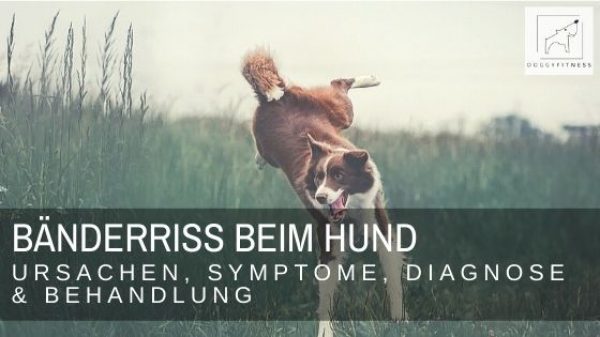Torn ligaments in dogs are one of the most common injuries in dog sports. The dog’s body has a variety of ligaments that provide stability to joints and can be damaged under stress or trauma.
There are three different degrees of severity for ligament injuries:
- Grade one ligament injury: ligament stretching (individual fibers of the ligament are overstretched)
- Grade two of a ligament injury : ligament tear (only parts of the ligament fibers are torn).
- Severity three: ligament tear (complete tear of the ligament fibers)
In the case of a very severe ligament rupture, it is possible that a bone fragment is also torn off. In addition, the joint capsule is also frequently damaged or the syndesmosis tears. Therapy and healing time always depend on the severity of the injury.
What can be the causes of a torn ligament? Torn ligament in dog
In addition to wear and tear of a ligament, severe trauma, such as a fall or twisting of a joint or dislocation, for example, can also be responsible for a torn ligament.
This happens especially in sports that involve tight turns, short stops, and twisting movements.
Torn ligaments – the typical symptoms
In particular, a sudden onset and very severe pain is a major symptom of a torn ligament. In addition, there may be the following signs:
- Pressure and strain pain
- severe swelling
- Bruise (hematoma)
- Inflammation
- Redness
In addition, a torn ligament is associated with a great sense of instability in the joint.
In the first step, the so-called PECH rule applies to a suspected torn ligament:
P: Pause
E: Ice (always apply ice pack or cooling pad to the skin with a cloth – otherwise risk of frostbite).
C: Compression bandage (English: “compression”)
H: Elevated position
The diagnosis
- clinical examination by the physician
- X-rays
- Magnetic resonance imaging (MRI)
- Computed tomography
- Ultrasound
Bony structures can be seen on an X-ray, but tendons and ligaments are not visible. Nevertheless, the first step is usually to take an X-ray to rule out bony injuries. In addition, radiographs may also provide an indication of other injuries to the ligamentous apparatus. For example, if the distance between the tibia and fibula is too great, this indicates a tear in the syndesmosis (connecting ligament between the tibia and fibula). Further examinations are then often performed using ultrasound, MRI or CT.
The treatment of a torn ligament
In many cases, conservative treatment is sufficient for a torn ligament – that is, treatment without surgical intervention. However, surgery is still frequently used in sporting dogs. The same applies to patients in whom the syndesmosis is injured or bony parts are affected.
The recovery process after torn ligaments in dogs
Both with and without surgery, rest is essential in the first step. This means that the four-legged patient should be kept at maximum rest. Initially, only “5-minute pipi rounds” on a leash and at a walking pace are indicated. The duration and intensity of the stress should then be designed according to the dog’s individual healing process. The leg may be used, but slippery floors, stairs and any kind of jumps and uncontrolled movements should be avoided.
Activity can be increased slowly and in a controlled manner over the next 6 weeks. A realistic goal is 3x daily 20-30 minute walks on leash after 6 weeks. Physiotherapeutic measures should be started promptly.
Can you prevent torn ligaments in sports Torn ligaments in dog
Targeted muscle building can strengthen the ligaments at risk of tearing. The right substrate is also important. you should always warm up the dog sufficiently.
What are possible complications?
As a rule, a torn ligament heals well and remains without permanent consequences. However, if you start loading too soon, it can take much longer for the ligament injury to heal. In addition, it can happen that ligaments grow back together too loosely. This is then referred to as mechanical instability.
All the love, your Tina
Dieser Beitrag ist auch verfügbar auf:
Français (French)
Deutsch (German)
Español (Spanish)
















